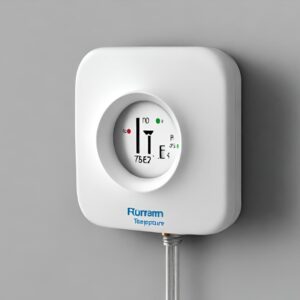Sagging wood windows can be a real eyesore, compromising not only the aesthetics of your home but also their functionality and energy efficiency. To effectively address this issue, it’s crucial to understand the underlying causes. This guide explores the common culprits behind sagging wood windows, equips you with tips for diagnosis, and outlines various solutions, including DIY fixes and professional repair options. Remember, for extensive damage or complex repairs, seeking help from a qualified window glass replacement Chicago professional is always recommended.
Common Causes of Sagging Wood Windows
Several factors can contribute to the frustrating problem of sagging wood windows. Here are some of the most frequent offenders:
Improper installation: Even minor mistakes during the initial window placement can lead to unevenness, causing the window to sag over time.
Sash weight or spring failure: In windows with a weight and pulley system, worn-out or broken weights or springs can no longer support the window sash, allowing it to sag downwards.
Warped window components: Exposure to moisture, extreme temperatures, or using improper materials during construction can cause the window frame or sash to warp, leading to misalignment and sagging.
Loose screws or hinges: Over time, screws can loosen, and hinges can become damaged. This compromises the structural integrity of the window and can contribute to sagging.
Deteriorated window frame: Rot or decay in the window frame weakens its structure, making it susceptible to sagging and potentially compromising the window’s overall functionality.
Diagnosis Tips and Tools
Identifying the culprit behind your sagging window is crucial for choosing the appropriate solution. Here are some methods to help you diagnose the problem:
Visual inspection: Begin with a thorough visual inspection. Look for signs of sagging, such as uneven gaps between the sash and frame or misalignment of the window.
Leveling tool: Use a level placed on the window sill or frame to check if it’s straight. Any tilting or sagging will be evident.
Rapping test: Gently tap on the window frame in different areas. A hollow sound might indicate loose components that could be contributing to the sagging.
Remember, these methods are for initial diagnosis. If you suspect extensive damage or lack the confidence to proceed with repairs, don’t hesitate to seek help from a qualified professional.
DIY Solutions for Minor Sagging
While some sagging issues require professional attention, here are a few DIY solutions you can attempt for minor cases:
Tightening loose screws or hinges: This is a straightforward fix. Locate the screws or hinges and use a screwdriver to tighten them securely. Be cautious not to over-tighten to avoid damaging the screws or hinges.
Resetting sash weights or springs (with caution): This process can be slightly more involved. Depending on your window style, you might need to access the weight pockets within the frame. Consult a professional for specific instructions on accessing and resetting the weights or springs, as improper handling can cause further damage.
Replacing weatherstripping: Worn-out weatherstripping can contribute to minor sagging by allowing the sash to shift slightly. Replacing it with new, properly fitting weatherstripping can improve the overall window fit and potentially alleviate minor sagging caused by gaps.
Remember, these DIY solutions are suitable only for minor sagging issues. If you’re unsure about the cause, the extent of the damage, or your ability to perform the repairs safely and effectively, always prioritize safety and seek help from a qualified professional. They possess the expertise, tools, and experience to diagnose the problem accurately and implement the most suitable solution, ensuring the long-term functionality and beauty of your windows.
Professional Repair Options
For more extensive sagging or situations requiring specialized skills and tools, consider professional repair options:
Window sash replacement: In cases of significant warping, cracking, or damage beyond repair, replacing the entire window sash might be necessary. Professionals can ensure an accurate fit and proper installation, restoring functionality and aesthetics.
Window frame repair: Through specialized techniques, professionals can address issues like rot, warping, or structural weaknesses in the window frame. This can involve repairing damaged sections, reinforcing the frame, or using specialized materials to restore its integrity and prevent further sagging.
Window replacement: In rare cases, where severe damage, extensive rot, or outdated window technology compromise functionality and energy efficiency beyond repair, complete window replacement might be the most viable option. Professionals can guide you through choosing suitable replacement windows, ensuring compatibility with your home’s style and structural requirements.
Preventive Maintenance Tips
Preventing window sagging in the first place is ideal. Here are some key preventive maintenance tips:
Regular inspection: Regularly inspect your windows for signs of wear and tear, potential warping, or loose components. Early detection allows for prompt intervention and prevents minor issues from escalating into major repairs.
Proper cleaning and maintenance: Regularly clean your windows with appropriate cleaning solutions and maintain them according to the manufacturer’s recommendations. This helps prevent moisture buildup, a significant contributor to warping and rot.
Professional maintenance: Consider consulting a qualified professional for periodic maintenance, especially for older windows. They can identify potential problems early on, perform necessary adjustments, and ensure your windows last for years to come.
Conclusion
Sagging wood windows can be addressed effectively through understanding the causes, implementing appropriate solutions, and prioritizing preventive maintenance. Remember, for complex repairs or extensive damage, seeking help from a qualified professional ensures long-lasting results and preserves the beauty and functionality of your cherished windows.




